

The use of solar panels has become a compelling conversation across Indonesia, transforming the way households, businesses, and even remote communities source electrical power. Instead of relying entirely on traditional grid electricity, Indonesians are increasingly turning to photovoltaic solutions that capture sunlight and convert it into usable energy. With abundant sunshine and an evolving energy landscape, the adoption of this technology in Indonesia reflects a significant shift toward sustainability, energy independence, and tailored solutions for various user needs.
At its core, embracing solar panels means investing in a system that reduces reliance on fossil fuels, lowers electricity bills, and helps counteract environmental challenges. But there’s much more beneath the surface: local policies, available technologies, financing options, and installation expertise all play important roles. This complete guide explores how solar panels are making an impact across Indonesia, the most relevant products and systems, and what you need to know to make informed decisions based on up-to-date information and Indonesian realities.
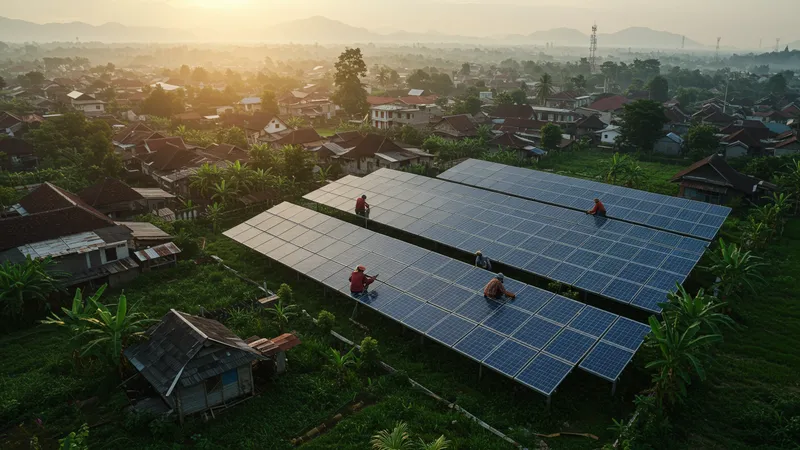
Choosing the right solar panel system in Indonesia involves understanding both the technical and cultural context. The PLN Surya Listrik Rooftop Program, for example, is designed to work seamlessly with national grid policies, letting users offset their bills directly. Solaris ESA’s approach meets the needs of urban dwellers who may have space constraints or want flexibility to expand their system over time. For businesses, Sun Energy specializes in larger, bespoke solutions that maximize return on investment for commercial-scale rooftops.
Comparing these three leading options in Indonesia’s solar market shows significant diversity—not only in price and scale, but in system integration, warranties, and after-sales service. All utilize photovoltaic technology, but each offers a particular angle: PLN’s governmental support, Solaris ESA’s modularity, and Sun Energy’s commercial experience. Additionally, the country’s sunny climate and rising electricity tariffs make these systems more appealing, especially in cities like Jakarta, Surabaya, and Bali.
Solar adoption is fueled by supportive government regulations, growing environmental awareness, and technological advancements. Indonesia’s government has introduced incentives and targets to boost renewable energy, with the goal of reaching 23% renewables in the national energy mix by 2025. As such, installing solar panels has become accessible for residential users and lucrative for businesses seeking to reduce long-term costs.
Beyond cost savings and sustainability, these solar panel systems contribute to Indonesia’s goal of expanding electricity access in off-grid regions. With solar technology increasingly reliable, many islands and rural areas benefit from decentralized solar installations—creating new opportunities for growth and self-reliance. Still, the specifics of installation, maintenance, and compatibility differ across providers, underlining the importance of choosing a trusted solution.
In summary, the landscape for solar power in Indonesia is dynamic and full of potential, shaped by both international trends and local ingenuity. As we proceed further, deeper details reveal even more valuable insights ahead—like how policy, performance, and practical usage play out in real-world situations across Indonesia’s diverse regions.
The performance and reliability of solar panel systems are driven by product features that address Indonesia’s specific climate conditions and energy needs. For example, the PLN Surya Listrik Rooftop Program supplies panels with high efficiency to ensure optimal use of rooftop space in urban settings. These systems often include inverters designed for Indonesia’s electricity grid, adhering to safety and regulatory requirements while minimizing energy losses during transmission and conversion.
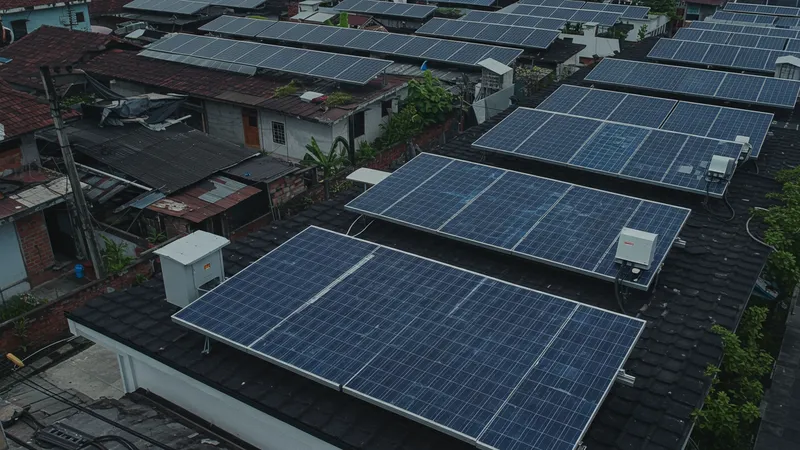
Solaris ESA Home System places special emphasis on modular design and ease of expansion. In areas with evolving energy demands, users can start with smaller packages and scale up as needed, making the solution suitable for families or small businesses anticipating growth. The panels themselves are treated for resistance to humidity and rainfall, reflecting Indonesia’s tropical weather, which can affect lesser-quality systems if not properly managed.
Sun Energy’s commercial solutions prioritize large-scale operations and customized engineering. These systems typically deploy higher-capacity inverters and storage options, catering to factories, hotels, and shopping centers facing substantial energy consumption. Sun Energy also offers comprehensive monitoring tools, enabling businesses to track their energy production and consumption in real time—a feature critical for optimizing returns and ensuring consistent supply for demanding business operations.
Technical specifications and after-sales service are important differentiators among these solutions. Leading providers in Indonesia offer multi-year warranties and responsive technical support, often with on-site inspections and annual maintenance packages. These performance-focused features give users confidence in their investment, knowing that their solar panel systems will continue to operate efficiently under the challenging conditions of the archipelago.
Affordability is a major consideration for anyone exploring solar panel systems in Indonesia. The three highlighted options—PLN Surya Listrik, Solaris ESA, and Sun Energy—offer flexible pricing structures tailored to different market segments. Small residential packages often begin at IDR 10 million, with larger rooftop commercial packages climbing above IDR 50 million. The cost typically includes panels, inverters, mounting hardware, installation, and warranty support.
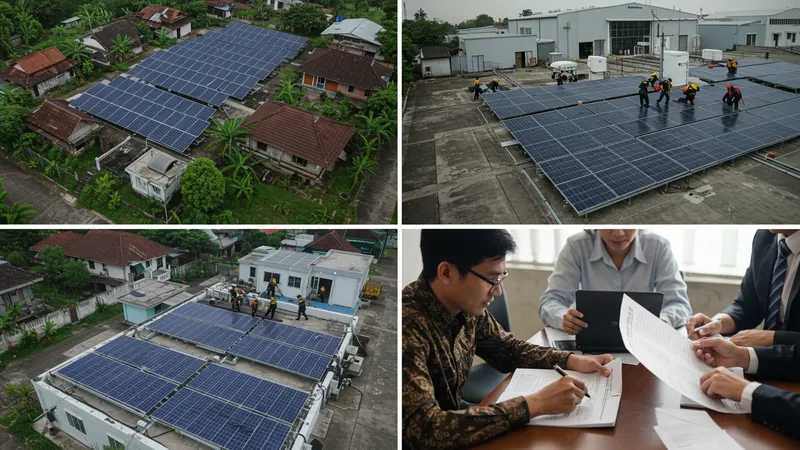
Several financing paths are available to ease the upfront investment. PLN’s program occasionally partners with banks or micro-finance entities to offer installment options or credit schemes, facilitating wider access. Solaris ESA and Sun Energy both work with third-party financiers, providing lease-to-own and power purchase agreements (PPAs) that spread costs over several years, appealing to both homeowners and large-scale businesses with limited initial capital.
Government incentives can also influence effective pricing. In some Indonesian provinces, residential users are entitled to small feed-in tariffs or reduced grid connection fees if their systems meet certain standards. Businesses may benefit from tax deductions for investments in renewable energy infrastructure. These incentives significantly improve the economic case for solar, making return periods often shorter than originally anticipated.
Maintaining transparency in financing and understanding the full scope of ownership costs—including potential maintenance, insurance, or regulatory fees—is key. Indonesian solar installers typically itemize all expenses up front and offer clear contract terms. This focus on clarity helps users compare competing providers and select a solution aligned with their financial objectives—an important step as solar adoption in Indonesia gains speed.
The installation process for solar panels in Indonesia is shaped by the country’s varied architectures, urban planning, and local regulations. PLN Surya Listrik installations, for example, must comply with state electricity utility standards. Certified technicians assess rooftop orientation, shade, and structural support before any system is mounted. The process generally involves thorough on-site surveys, electrical integration, and registration with PLN’s network if the system is grid-tied.
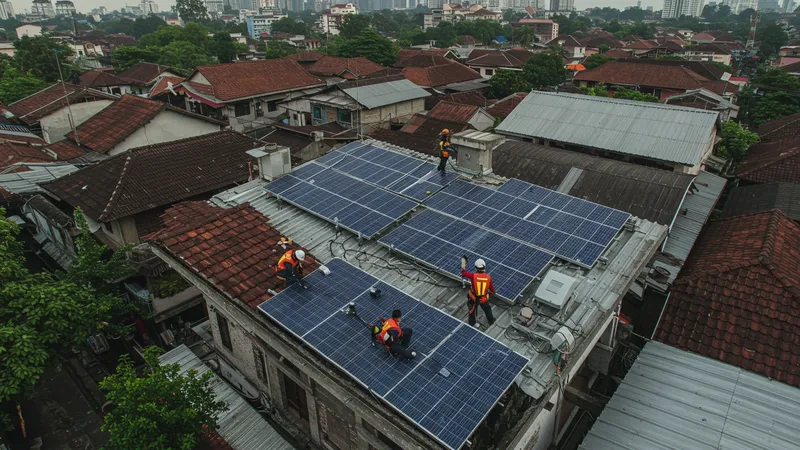
Solaris ESA home systems spotlight user-friendly installation and modular expansion. Many bundles are designed for quick setup on tiled or metal rooftops without extensive retrofitting. The system includes straightforward wiring and plug-and-play inverters, reducing installation time. Support teams are available for customization, particularly in residential neighborhoods where roof layouts and space availability can vary widely.
On the commercial side, Sun Energy projects often involve advanced engineering consultations and integration with complex electrical loads. Installation schedules are coordinated to minimize disruption to business activities. The company offers remote monitoring and predictive maintenance plans, allowing proactive identification of performance issues before they become costly interruptions—a critical aspect for factory owners or hospitality operators relying on uninterrupted power.
Routine maintenance across all systems typically includes periodic cleaning (to cope with dust and tropical rain), inspections, and inverter checks. Most providers in Indonesia bundle annual maintenance in the initial contracts or offer ongoing support for a fee. Proactive care not only optimizes output but extends the life of installed panels—essential in Indonesia’s challenging environment, where nature can sometimes test even the most robust technology.
Solar panels are reshaping Indonesia’s energy landscape, offering new possibilities for reducing grid dependency, stabilizing costs, and driving environmental initiatives. Their rising use in urban, suburban, and off-grid areas demonstrates a flexible response to Indonesia’s geographic and economic diversity. The enhanced reliability and scalability of solutions like those from PLN Surya Listrik, Solaris ESA, and Sun Energy help meet a variety of needs, from single-family homes in Jakarta to sprawling commercial sites in Batam.
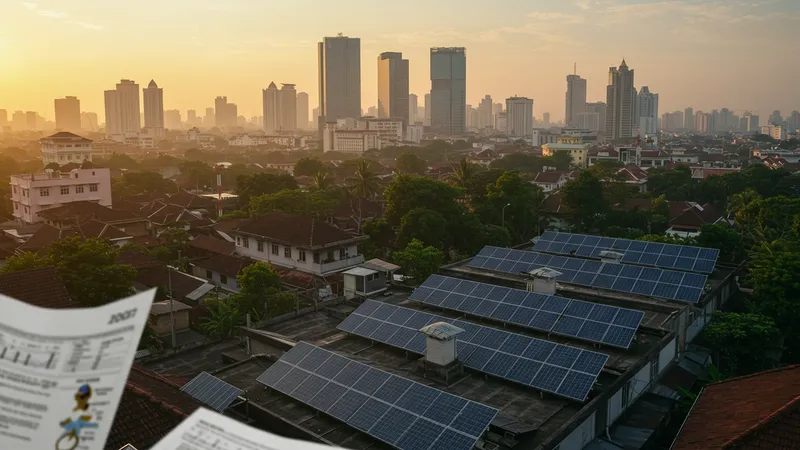
However, several challenges remain. Despite favorable policies, bureaucracy and evolving local regulations sometimes slow project rollouts, especially in rapidly developing regions. Import tariffs, quality control of imported modules, and limited awareness about available financing options can also impede broader adoption. Users must navigate the process carefully and choose reputable providers, as not all market players offer equal quality or post-installation support.
Looking ahead, trends such as battery storage integration, smart grid compatibility, and digital monitoring tools are likely to shape the next phase of Indonesia’s solar market. As more households and businesses embrace solar, grid operators and regulators continually adapt to balance supply and demand across the islands. Standards for panel efficiency, inverters, and installation practices are expected to tighten, further professionalizing the industry and ensuring long-term project sustainability.
As Indonesia continues to advance its renewable energy agenda, new business models—such as community-based microgrids or shared solar platforms—may emerge to extend the benefits of solar panels even further. For anyone exploring solar in Indonesia, staying informed about these dynamic changes will be vital in maximizing both the technical and economic benefits of solar power throughout the archipelago.